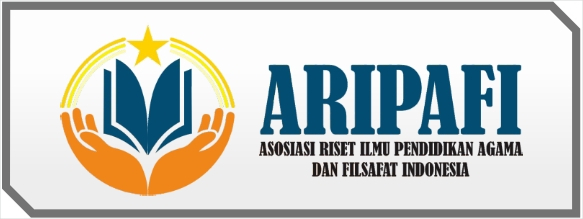Peningkatkan Minat Hasil Belajar Siswa Pelajaran Pak Menggunakan Model PBL Pada Fase F Kelas XI SMAN 1 Sipora
DOI:
https://doi.org/10.55606/semnaspa.v4i2.1359Keywords:
Interest in Learning, Learning Results, Problem Based LearningAbstract
The aim of this classroom action research was to increase student interest and learning outcomes in PAK lessons on Competencies in the Role of Hierarchy and Laity as Church Members for class XI Phase F students of SMAN 1 Sipora Semester I for the 2023/2024 academic year. To achieve this goal, researchers used a problem based learning (PBL) learning model designed in two cycles. In each cycle two meetings are held. The procedures in each cycle include the stages: 1) planning, 2) implementing actions, 3) observation, and 4) reflection and evaluation. The effectiveness of actions in each cycle is measured from the results of observations and tests. In this study, the researcher stated that observations of students' interest in learning were seen and measured from the level of independence and faith and devotion to TYME and noble character in the dimensions of the Pancasila Student profile (P3). The observation data is described, interpreted, then reflected on to determine corrective action in the next cycle. The results of the action research carried out in two cycles were that students' learning interest in cycle I reached 76.5%, while in cycle II students' learning interest reached 89.5%. Comparison of the results of increasing student interest in learning in cycle I and cycle II increased by 13%. Likewise, student learning outcomes also increased with the results in cycle I reaching 77.6% and in cycle II reaching 87%. This shows an increase in student learning outcomes by 8%. Thus, based on the results obtained, it shows that there has been an increase in student interest and learning outcomes and they have achieved completion. So it can be concluded that the use of the problem based learning method can increase PAK interest and learning outcomes in the competency of the Role of Hierarchy and Laity as Church Members for class XI Phase F students of SMAN 1 Sipora Semester I for the 2023/2024 academic year. Increasing student interest in learning has a positive impact on increasing student learning outcomes.
References
Depdiknas (2006). Pengembangan Model Pembelajaran, Jakarta.
Zainal aqib. Media pembelajaran. Nganjuk : Makalah Diklat Guru.
Eliza, Nela. (2019). Efektivitas Bimbingan Kelompok Teknik Homeroom untuk Meningkatkan Self Disclousure Peserta didik (Penelitian Quasi Eksperiment terhadap Peserta didik Kelas VIII SMPN 29 Bandung Tahun Ajaran 2018/2019), 2 (1), 16-18.
Manis, Hoeda. (2010). Tip dan Panduan Praktis agar Belajar jadi Asyik, Efektif dan Menyenangkan. Jakarta: PT Elex Media Komputindo.
Maryani, Ika dkk. (2018). Model Intervensi Gangguan Kesulitan Belajar. Yogyakarta: K-Media.
Erlando Doni Sirait, 2016, Pengaruh minat berlajar terhadap prestasi belajar matematika, Jurnal Formatif 6(1): 35-43, 2016
Ni Luh Putu Sudiasih, S.Pd. Upaya Meningkatkan Motivasi Belajar PPKN Melalui Model Pembelajaran Problem Based Learning Pada Siswa Kelas x IPA2 di SMA Negeri 1 Kuta Pada Semester Ganjil Tahun Ajaran 2020/2021, Bandung.
Rusmono, R. (2014). Strategi Pembelajaran dengan Problem Based Learning Itu Perlu Untuk Meningkatkan Profesionalitas Guru (Edisi Kedua). Bogor: Ghalia Indonesia.
Gafar, A. A. & Ridwan, T. (2008). Implementasi problem based learning (PBL) pada proses pembelajaran di BPTP Bandung. Jurnal Universitas Pendidikan Indonesia, Nomor VII, 12
Mahardiyanto. Penerapan Problem Based Learning untuk Meningkatkan Hasil Belajar Geografi Siswa Kelas XI IPS 3 SMA Negeri 2 Ngaglik. Malang: Universitas Kanjuruhan (2017) http://repository.upi.edu/49995/
Jannah, Nurul. 2015. Hubungan Kecanduan Game dengan Motivasi Belajar Siswa dan Implikasinya Terhadap Bimbingan dan Konseling. 11 (21). file:///C:/Users/ASUS/Downloads/6473-12864-1-PB.pdf
Downloads
Published
How to Cite
Issue
Section
License
Copyright (c) 2023 PROSIDING SEMINAR NASIONAL PENDIDIKAN DAN AGAMA

This work is licensed under a Creative Commons Attribution-ShareAlike 4.0 International License.
















